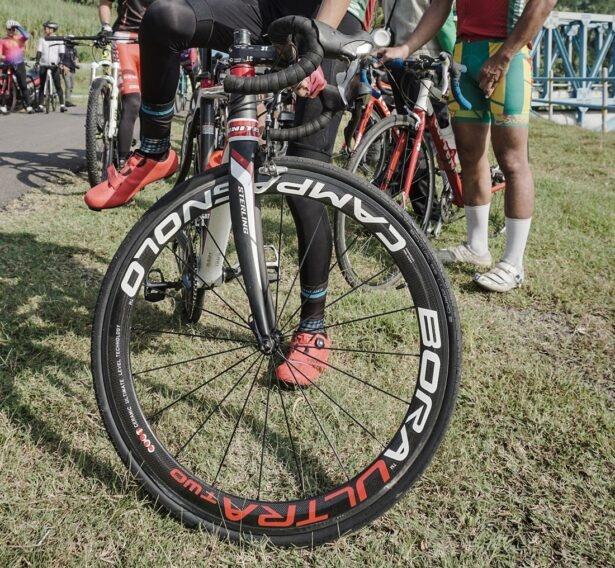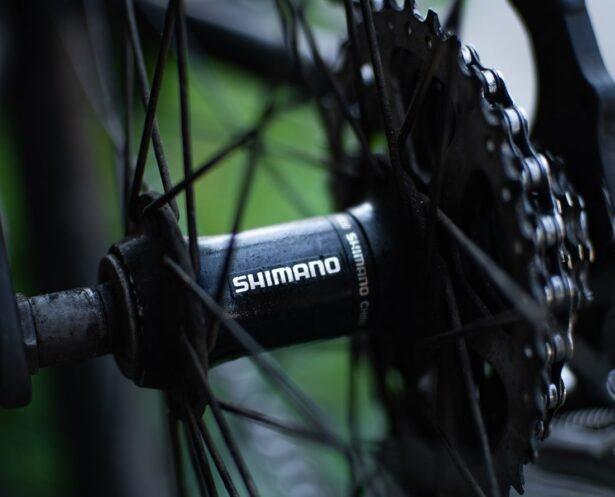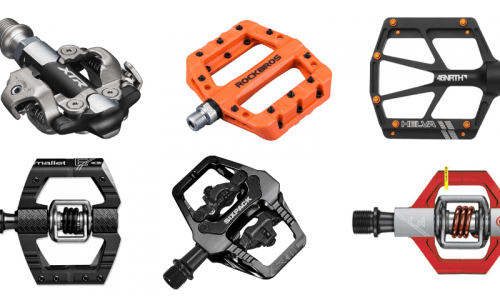When it comes to cycling components, two brands you would have heard a lot about are Shimano and Campagnolo. They are industry-leading giants and have been in competition for many years regarding cycling components.
We are often asked about these two brands and how they compete against each other. In this article, we will be breaking them down and telling you a bit about each, using questions we have been asked about them.

Who’s been around the longest, Shimano or Campagnolo?
Shimano was founded in 1921 in Osaka, Japan. The original founder was Shozaburo Shimano, hence the name Shimano.
It originally started with one single lathe that measured 1.8m. They were under the name Shimano Iron Works to start, eventually ending up as Shimano.
Campagnolo was founded in 1933 in Vincenza, Italy. The founder was Tullio Campagnolo. It all started in the back room of his father’s hardware store. What he didn’t know at the time was they were going to be changing cycling forever in the future.
As far as age goes, Shimano is older than Campagnolo, but as you know, age is just a number, especially when it comes to bicycles and components.
What do Shimano and Campagnolo make?
Shimano is well known for not just making cycling components but also engineering a lot of other goods. You will find fishing and rowing equipment alongside their cycling goods. They are well known in the fishing world for making world-class reels.
Campagnolo only really focuses on bike components. They have a huge range but typically don’t break out into other markets like Shimano. Stick to what you know.

What cycling disciplines do Shimano and Campagnolo cover?
Shimano covers a huge amount of cycling disciplines, from mountain biking, triathlon, time trailing, road, gravel, and many more.
They offer a very comprehensive range and a lot of variety for different kinds of riding. Campagnolo covers road, gravel, and triathlon. They have a much more limited range compared to Shimano.
Which performs better, Shimano or Campagnolo?
Shimano is known for incredible reliability and crisp, smooth shifting. Shimano offers a huge range of performance levels from very budget and basic to expensive but incredibly technologically advanced.
The high-end products are used by the top professionals in races such as the Tour de France.

Campagnolo has a smaller range of groupsets. They focus much more on mid-range and top-end components. They are well known for their high-end performance in grand tour races. Many companies pick them over Shimano.
Let’s use the high-end groupsets as an example. Overall there’s very little difference in performance.
Campagnolo is known to be slightly lighter, but Shimano is known for incredibly smooth, fast shifting.
What is easier to work on, Shimano or Campagnolo?
Shimano is known for making some amazing products. Not only in the way they perform but also in how easy they are to fit. Mechanics are typically very happy to work on Shimano as the installation is easy.
Campagnolo is also not shy of a great product. Generally, from feedback from mechanics, they can be tougher to work on, but there’s very little between the two.
Many say Shimano products work perfectly when they go on, then slowly wear out, and Campagnolo goes on and wears in. Mechanics often say with Campagnolo, you do need to give more time to adjustments compared to Shimano on installation.
Which looks better, Shimano or Campagnolo?
When it comes to looks, generally, both companies are known for making great-looking products. Shimano is very sleek and looks incredibly modern, especially on its high-end components.
Campagnolo is known for making better-looking products. Not only does it look modern and sleek, but they have always made a product with an element of class.
In previous years Campagnolo has made limited-edition products which are a work of art.

Which is cheaper, Shimano or Campagnolo?
Shimano has always been known for not being the cheapest but for excellent value for money. As far as bicycle component prices go, they do sit in the middle of the market to the higher end, depending on the product.
Campagnolo is generally on the higher end of the price range and is considered much more expensive than Shimano.
Shimano is generally much cheaper than Campagnolo because they are produced in factories in China, while Campagnolo is made in Europe. Campagnolo is known for using very high-end materials, and because they manufacture in Europe, it’s much more expensive.

Comparing Shimano and Campagnolo Groupsets
Shimano and Campagnolo are best known for their groupsets. They both have a very wide range, and it can be challenging to understand what is budget, mid-range, and high-end.
As Campaganolo only really works with road and gravel, we will compare these current groupsets from them both.
| Shimano Groupset | Performance | Campagnolo Groupset | Performance |
| Dura-Ace Di2 12s Electronic | High | Super Record EPS 12s Electronic | High |
| Ultegra Di2 12s Electronic | High | Super Record 12s | High |
| 105 Di2 12s Electronic | Medium | Record EPS 12s Electronic | High |
| 105 R7000 11s | Medium | Record 12s | High |
| Tiagra 4700 10s | Medium | Chorus 12s | Medium |
| Sora R3000 9s | Low | Potenza 11s | Medium |
| Claris R2000 8s | Low | Centaur 11s | Medium |
Here we can clearly see Shimano has a much wider range when it comes to performance. They offer high-end groupsets for racing and low-end groupsets for entry-level riding and beginners to cycling. Shimano is seen at every level, and that is what makes them special as a brand in its own way.
Campagnolo mainly focuses on high-end groupsets. This is a common reason why they are classed as an expensive brand and charge much more despite the production costs.
The Super Record EPS is their top groupset and the rival to Shimano’s Dura-Ace Di2. You have the Chorus and Potenza rivaling the Ultegra. Finally, the Centaur to rival the Shimano 105.
It is difficult to compare the brands’ levels against each other as Campagnolo has more options on the high-end side compared to Shimano having a wider range.
Gravel
| Shimano Groupset | Performance | Campagnolo Groupset | Performance |
| GRX RX815 Electronic 11s | High | Ekar 13s | High |
| GRX RX800 11s | High | ||
| GRX RX600 11s (10s Crank) | Medium | ||
| GRX RX400 10s | Medium |
When it comes to riding, Shimano was one of the first companies to make a gravel groupset. They made a wide range of different options which were interchangeable with other Shimano road and mountain bike groupsets. This meant you got a huge amount of options when it came to compatibility and customization.
Campagnolo came out with the Ekar. It is an incredible gravel groupset which they just made a single version of.
It offers 13 speeds, more than any road or gravel Shimano groupset currently. It is ideal for gravel riding but quite rare to see, as this came out after all the other brands and has yet to become as popular.
Are Shimano and Campagnolo Compatible with other brands?
 We often get asked about compatibility across different brands. This is a very complex subject on which many cyclists have different opinions.
We often get asked about compatibility across different brands. This is a very complex subject on which many cyclists have different opinions.
Before we start, we recommend using Shimano parts if you have a Shimano groupset. If you have Campagnolo, then use Campagnolo parts. It is best for the health of the groupset.
Shimano does offer compatibility with other brands. They share a lot of similarities when it comes to specification with SRAM.
You will often see groupsets using both SRAM and Shimano components, which will work perfectly. Shimano and SRAM even share the same freehubs and spacing on cassettes.
Campagnolo very rarely can be combined with other groupsets and components. They use different freehubs and spacing and generally have gone their own way regarding the specification.
Some cyclists say there are parts you can get away with using, but it doesn’t offer the same experience or reliability.
This is why when you look at new wheelsets, you either have Shimano/SRAM or Campagnolo freehubs, as they are incompatible. If you’re looking for a groupset that offers more opinions and can be mixed, Shimano is the way forward.
Why do brands favor Shimano or Campagnolo?
Interestingly, when it comes to bringing a bike together, you will often see a certain brand favoring either Shimano or Campagnolo. This is because they require different freehubs and other parts to be compatible.
The bigger brands offering larger bike ranges, such as Trek, Giant, and Specialized, will generally favor Shimano. This is so they can cater to both budget bikes and also high-end racing machines. You will also find as Shimano is cheaper, they can offer a more competitively priced bike.

Campagnolo years ago used to be favored by many brands, but over the years, that has changed, and we are seeing fewer bikes that use them. A few brands still offer bikes in Campagnolo.
These are typically high-end bike brands which many come from Italy or brands that offer it as a custom build option.
Conclusion
We personally don’t favor one brand over another. We believe if you are looking for performance, then high-end Shimano or Campagnolo will be able to cater to you.
If you are looking to keep the budget low, then Shimano will be the better option out of the two. When it comes to style, we believe Campagnolo does take the crown.

Robbie Ferri has spent years working in a bike shop, has worked with industry leading brands on product creation, has been a semi pro athlete, and is a fully qualified strength and conditioning coach. He has broken World Records, bikepacked all over the World and raced ultra distance at a top-level.



Racers do not need to be advised of what gears to use. The recreational cyclist generally goes about ten mph. What the recreational rider needs is the most agreeable gear of the moment. This calls for a 14/16/18/21/24/28 FW with 36-48 or 40-52 chainrings. These gears match where the ranges overlap. You can use a triple crank to get lower gears. You might try my recommended gears in areas that have hills like the LSU campus in Baton Rouge,Louisiana and a bike path around the lakes in the area which are level.
If you search for the most agreeable gear of the moment, you will get used to the gears you normally use. You would like to minimize chain deflection. So you want a geometric double step gearing in which the gears match where the ranges overlap. You want a 14/16/18/21/24/28 FW with the 36-48 or 40-52 chainrings. You can use a triple crank to get lower gears. But you want to minimize chain deflection and a geometric double step does that.